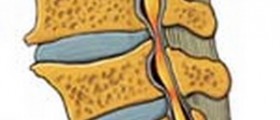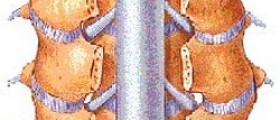I was told in 2010 I had 1 Tarlov Cyst showed up on my MRI. I had pain and my rt leg was giving way. Now it's 2013 and my new MRI shows 5 Tarlov Cyst and I have been in constant pain since 3/16/13 well over 20 + days. I cry from the pain my rt leg gives way more than it did before I would say 1 a week at least pain goes to my hips and not sure if it is related but my rt arm goes numb and my hand gets cold and it feels like I'm was given a jolt of electric CRZY I know. My orthopedic dr I went to I only saw the PA not him and she flat out told me Tarlov Cyst DO NOT cause pain. I cried and left there in tears. She referred md to have t and a epidural spinal injection nope. I'm going for a 2 md opinion I hear way to much that PT can make it worse and I'm in enough pain. So I pray I get some relief in this new DR I see 3/12/13. My question is how the hell do these Dr's know that I'm not in pain from them I told her its like sitting on something maybe a rock I can't move. I am sick of pain and need to get help. On a scale of 1-10 my pain fluctuates from 7-10 nothing less not any pain pills help me. FYI TARLOV CYST DO CAUSE PAIN.
Loading...
I have Tarlov Cysts growing out of all the nerve roots in my Sacrum and I can tell you that they cause terrible pain that never goes away even with very strong medication. There is very little that can be done unless you can go to the very rare neurologists that will deal with them. I would rather have cancer-at least you have a good chance at getting rid of that. I am so sorry you have to deal with these.
Loading...
Yes, cysts that are commonly referred to as Tarlov Cysts can go away on their own. However, these same, deflated cysts can refill at any time in the future, while new cysts can develop in any area along the spinal cord following any commonly used type of Tarlov Cyst treatment.
I know these things can happen because this is what happened to me.
In early 2010, I underwent a spinal cord surgery known as a Sacral Laminectomy, which was used to treat my giant intradural, meningeal cyst, measuring 5cm x 9cm. Within one year of my sacral cyst surgery, my three small, cervical, perineural cysts disappeared on their own, while three new, but small and growing perineural cysts developed within seven years of my sacral cyst surgery (in 2017). three new cysts formed in the same area as my previously treated meningeal cyst (S2-S4).
All, experienced neurosurgeons, those who commonly treat Tarlov, Perineural, and Meningeal Cysts, are well aware of how 'new cysts' can develop at any time, along any area of the spine following any of the surgical treatments used to treat cysts that are commonly referred to as Tarlov Cysts. Although many surgeons state, "Tarlov Cysts cannot return following a Tarlov Cyst surgical treatment", their knowledge of the probability of developing new cysts suggests that some surgeons are using plain language to lead patients to believe that Tarlov Cyst surgery creates a medical solution, when in fact no medical solution or cure exists for Tarlov Cyst Disease patients.
Most surgeons and many other Tarlov Cyst Disease care providers are well aware that no cure currently exists for Tarlov Cysts. In fact, most specialists with experience in treating Tarlov Cysts know that many of their surgical patients could be living with the risks associated with a Connective Tissue Disorder (CTD) such as; hypermobile Ehlers-Danlos Syndrome (hEDS), Loeys Dietz Syndrome (LDS), and Marfan's. If your surgeon isn't offering this information during your surgical consult, then this unwillingness to disclose important information could suggest that this specific surgeon may not be guided by medical ethics rules, capable of protecting patients from unscrupulous surgeons, who practice medicine without knowing the most current and relevant information capable of keeping you, the patient safe.
Through the use of medical transparency, almost any medical professional with Tarlov Cyst Disease specific experience, could and should expose their knowledge basics, to each patient during their surgical consult. Without this exposure, then this basic care ability suggests that their patients, basic healthcare goals aren't patient-centric. Any time that a patient with a CTD undergoes any type of surgery, these patients could be at greater risk caused of the patient's inability to heal due to connective tissue disorder (CTD) weaknesses.
I know these things can happen because this is what happened to me.
In early 2010, I underwent a spinal cord surgery known as a Sacral Laminectomy, which was used to treat my giant intradural, meningeal cyst, measuring 5cm x 9cm. Within one year of my sacral cyst surgery, my three small, cervical, perineural cysts disappeared on their own, while three new, but small and growing perineural cysts developed within seven years of my sacral cyst surgery (in 2017). three new cysts formed in the same area as my previously treated meningeal cyst (S2-S4).
All, experienced neurosurgeons, those who commonly treat Tarlov, Perineural, and Meningeal Cysts, are well aware of how 'new cysts' can develop at any time, along any area of the spine following any of the surgical treatments used to treat cysts that are commonly referred to as Tarlov Cysts. Although many surgeons state, "Tarlov Cysts cannot return following a Tarlov Cyst surgical treatment", their knowledge of the probability of developing new cysts suggests that some surgeons are using plain language to lead patients to believe that Tarlov Cyst surgery creates a medical solution, when in fact no medical solution or cure exists for Tarlov Cyst Disease patients.
Most surgeons and many other Tarlov Cyst Disease care providers are well aware that no cure currently exists for Tarlov Cysts. In fact, most specialists with experience in treating Tarlov Cysts know that many of their surgical patients could be living with the risks associated with a Connective Tissue Disorder (CTD) such as; hypermobile Ehlers-Danlos Syndrome (hEDS), Loeys Dietz Syndrome (LDS), and Marfan's. If your surgeon isn't offering this information during your surgical consult, then this unwillingness to disclose important information could suggest that this specific surgeon may not be guided by medical ethics rules, capable of protecting patients from unscrupulous surgeons, who practice medicine without knowing the most current and relevant information capable of keeping you, the patient safe.
Through the use of medical transparency, almost any medical professional with Tarlov Cyst Disease specific experience, could and should expose their knowledge basics, to each patient during their surgical consult. Without this exposure, then this basic care ability suggests that their patients, basic healthcare goals aren't patient-centric. Any time that a patient with a CTD undergoes any type of surgery, these patients could be at greater risk caused of the patient's inability to heal due to connective tissue disorder (CTD) weaknesses.
Loading...

















